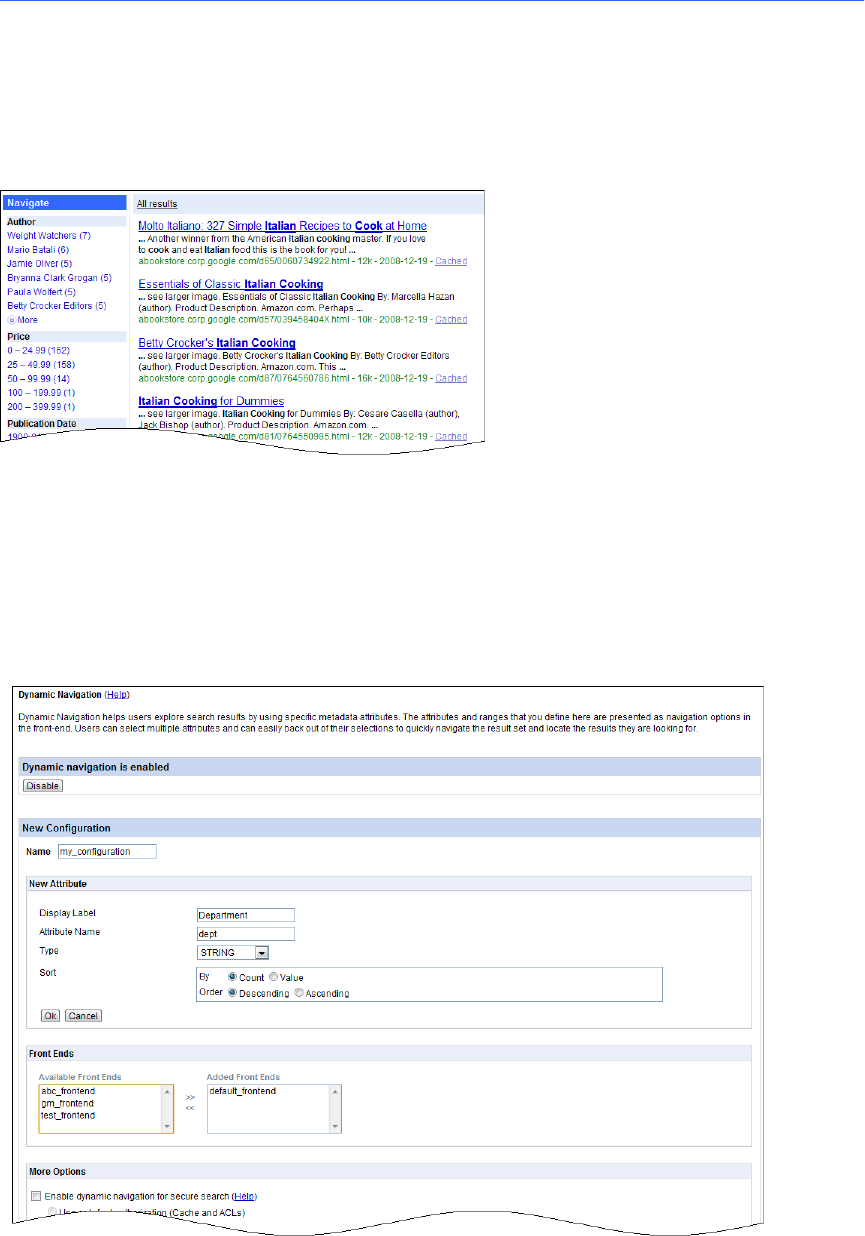Manual
Table Of Contents
- Getting the Most from Your Google Search Appliance
- Contents
- Introduction
- Planning
- Setting Up
- Crawling and Indexing
- Search Experience
- Using Features to Enhance the Search Experience
- Using Front Ends
- Forcing Specific Documents to the Top of Search Results
- Suggesting Alternative Search Terms along with Results
- Grouping Search Results by Topic
- Providing Options for Navigating Search Results
- Displaying Expert Profiles with Search Results
- Providing Real-Time Connectivity to Business Applications
- Integrating Personal Content from Google Apps
- Restricting Search Results
- Controlling Automatic Searching of Synonyms
- Influencing Results Rankings
- Segmenting the Index
- Providing User Results
- Enabling User Alerts
- Displaying Translations of Search Results
- Showing Document Previews in Search Results
- Customizing the User Interface
- Collecting Metrics about User Clicks
- Essentials
- Using the Admin Console
- Using Language Options
- Extending Universal Search
- Monitoring a Search Appliance
- Getting Help
- Quick Reference
- Index

Google Search Appliance: Getting the Most from Your Google Search Appliance Search Experience 39
Providing Options for Navigating Search Results
In many cases, content already has considerable metadata associated with it. As a search appliance
administrator, you can use metadata to help users explore search results by using dynamic navigation.
With dynamic navigation, when a user clicks on a metadata attribute value, the search results are
filtered to contain results from the original search query that also have that specific attribute value. For
example, when a user searches for the topic “Italian cooking,” dynamic navigation options appear under
Navigate, along with the search results, as shown in the following figure.
Setting Up Dynamic Navigation
Set up dynamic navigation by performing the following tasks with the Admin Console:
1. Enabling dynamic navigation and adding attributes by using the Serving > Dynamic Navigation
page, shown in the following figure.










